By Ken Lain, the mountain gardener
With May our local peak planting month, right after Mother’s Day the garden center fills to capacity with plants, long-time local favorites, and many 2017 introductions. Organic herbs overflow the nursery as vegetable gardens are planted for the season.
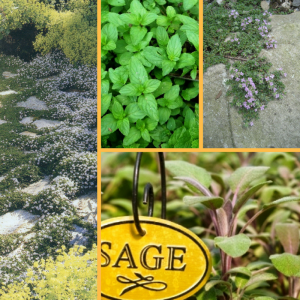 This week’s column focuses on the best herbs for your garden and the distinguishing characteristics of each. It may surprise you that deer, rabbits, and javelins find the taste of herbs distasteful. Consequently, animals are no threats to herbs!
This week’s column focuses on the best herbs for your garden and the distinguishing characteristics of each. It may surprise you that deer, rabbits, and javelins find the taste of herbs distasteful. Consequently, animals are no threats to herbs!
There are many herbs that can be planted once and left to grow for many years. Perennial herbs take some of the heavy lifting out of garden design by coming back year-after-year, always with appealing looks and scents. Planting these enduring herbs allows you to divide and expand them each season for free. Spread the seeds anywhere in your garden you’d like to have more plants.
At this time, there are hundreds of herbal plants at Watters Garden Center, but here’s my list of the five best producers. Herbs are amazingly easy to grow in mountain gardens, but these five also are my favorites for culinary use and beauty.
#1 Echinacea is not only useful for healing; it’s a beautiful accent for any garden. Echinacea (a.k.a. Coneflower) grows in virtually any garden situation. From moist, fertile soil, to dry and arid conditions, echinacea finds a way 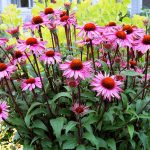 to thrive.
to thrive.
To help echinacea spread through the garden, wait until the cone flowers dry up completely in autumn. Remove the head and separate the pointy black seeds that are left behind. Gloves are recommended because the seeds can be rather sharp.
#2 Thyme is one of the herbs that will grow in any garden. It’s perfect for gardeners who 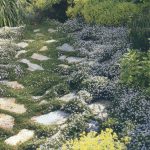 aren’t particularly hands-on because the less you fuss with this herb, the healthier it becomes. Use thyme as a filler between stones in your walkway. It offers a lovely scent when stepped on and can handle moderate traffic. Thyme grows well in areas that are too dry and with soil too weak for other plants.
aren’t particularly hands-on because the less you fuss with this herb, the healthier it becomes. Use thyme as a filler between stones in your walkway. It offers a lovely scent when stepped on and can handle moderate traffic. Thyme grows well in areas that are too dry and with soil too weak for other plants.
Thyme loves to be trimmed back, making it easy to cut into decorative shapes for a formal look.
Watters has varieties of thyme with both upright and trailing habits so that there’s one to fit almost any situation and design. Multiplying is a snap, just divide a healthy plant or take a cutting.
#3 Mint is invasive, but it is also a valuable addition to any hard to cultivate garden. It will spread anywhere you allow and many places you don’t. Try planting your mint in a bucket buried at garden level to trap runners and 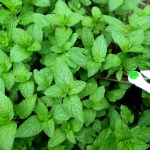 roots. This technique helps to contain my mint. Plant next to that dry wash to soften all the rock spilling through the yard.
roots. This technique helps to contain my mint. Plant next to that dry wash to soften all the rock spilling through the yard.
Mint is a refreshing, gentle tea herb with a lovely floral scent. Try growing a greater variety of mints if you’re interested in hot or cold herbal teas. I also find mint an exciting addition to salsas and sangria.
Don’t allow your mint varieties to mingle. Allow plenty of room between each type to ensure that bees and butterflies don’t cross-pollinate the different varieties. My mints are separated into different beds where they are out of sight from each other. Peppermint planted by the dry wash in the back yard, chocolate mint next to the driveway, pineapple mint by the mailbox, and spearmint under the hose bib by the front door. Mints are terrific in mountain gardens.
#4 Sage is a wonderfully versatile herb for any garden. It comes in many colorful varieties and growth habits. Try  using it as a filler around other tall garden plants. Sage will grow for many years, returning after even the harshest of winters.
using it as a filler around other tall garden plants. Sage will grow for many years, returning after even the harshest of winters.
Sage’s only negative characteristic is that it can become woody if left untended for too many years. Avoid woodiness by keeping sages pruned back to encourage new growth. The leaves will grow close to the cuts and result in a more beautiful plant.
#5 Lavender is used for everything from cooking to healing. Try growing this elegant 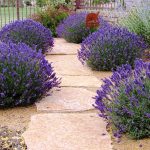 herb alongside your best flowers. From shades of purple and blue to white, lavender truly is a beautiful perennial herb.
herb alongside your best flowers. From shades of purple and blue to white, lavender truly is a beautiful perennial herb.
Be sure to plant lavender with growing room. You will be impressed at how large the plants can grow after a few years.
Another trick you might try with lavender is to grow it in a stunning glazed container. We have had a gorgeous Spanish lavender growing in an oxblood red container for years at our hot courtyard entrance.
Designing Around Perennials – Perennial herbs are an excellent way to grow your garden landscape without the demands of replanting every year. Whether considering or reconsidering your garden design be sure to include all the locations suitable for herbs.
Until next week, I’ll be tasting fresh organic herbs with gardeners here at Watters Garden Center.
Ken Lain can be found throughout the week at Watters Garden Center, 1815 W. Iron Springs Rd in Prescott, or contacted through his web site at WattersGardenCenter.com or FB.com/WattersGardenCenter .

